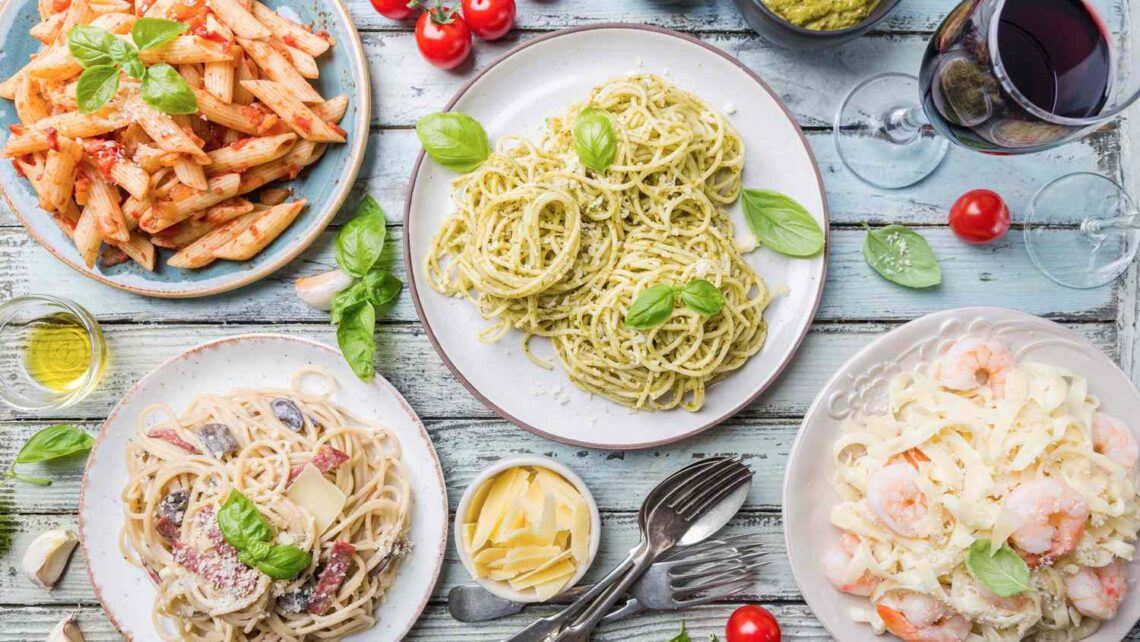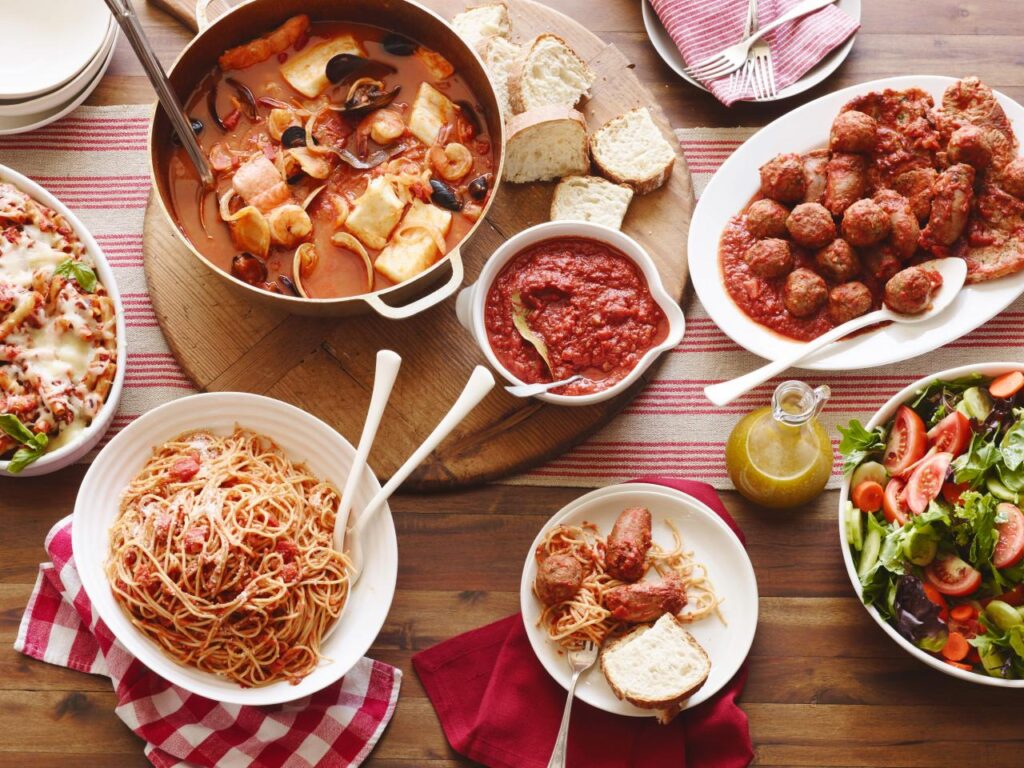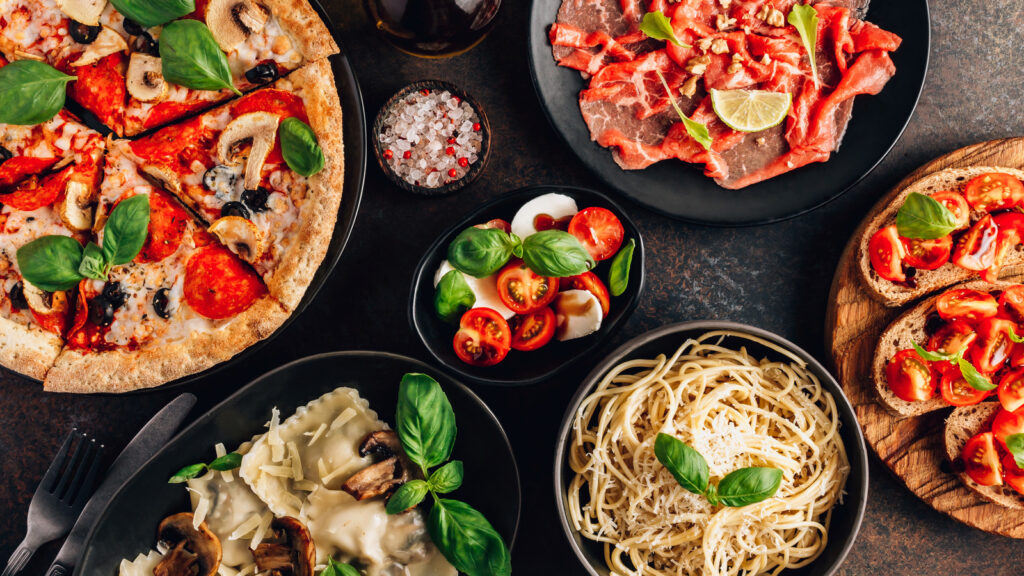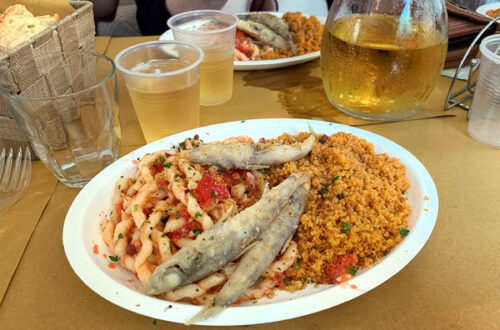
The Art of Italian Cooking: Tradition, Technique, and Taste
Italian cuisine is renowned worldwide for its rich flavors, vibrant colors, and deep-rooted culinary traditions. From the bustling streets of Naples to the quaint villages of Tuscany, Italian cooking is a celebration of fresh ingredients, time-honored techniques, and the love and passion that Italians infuse into every dish. In this article, we delve into the essence of Italian cooking, exploring its rich tradition, meticulous techniques, and unparalleled taste.
The Heart of Italian Cuisine

At the heart of Italian cuisine lies a profound respect for tradition. Passed down through generations, Italian recipes are cherished family heirlooms, each with its own story to tell. From the rugged hills of Umbria to the sun-kissed shores of Sicily, every region of Italy boasts its culinary specialties, reflecting the diverse landscapes and cultural influences that have shaped the country’s gastronomic heritage.
Italian cuisine is deeply rooted in the seasons, with dishes changing to reflect the bounty of each harvest. In the spring, fresh peas and artichokes grace the table, while summer brings an abundance of ripe tomatoes, fragrant basil, and sweet stone fruits. As the days grow shorter and the temperatures drop, hearty soups, braised meats, and roasted root vegetables take center stage, warming the soul and satisfying the appetite.
The rituals of Italian cooking extend beyond the kitchen, encompassing the entire dining experience. Meals are a time for family and friends to come together, sharing stories, laughter, and, of course, delicious food. Whether it’s a leisurely Sunday lunch or a festive holiday feast, Italian cuisine is a celebration of life, love, and the simple pleasures of the table. A homeschooling tutor in Bettendorf might incorporate these culinary traditions into their curriculum, offering a deliciously educational experience for their students.
The Mastery of Italian Technique
Central to the art of Italian cooking is the mastery of technique. From the delicate hand-rolling of pasta to the precise seasoning of sauces, Italian chefs approach their craft with meticulous attention to detail. Each step in the cooking process is executed with care and precision, resulting in dishes that are as visually stunning as they are delicious.
Italian cuisine is characterized by its simplicity, with dishes often composed of just a few high-quality ingredients. Yet, it is this simplicity that requires a mastery of technique to achieve perfection. Take, for example, the classic caprese salad: just tomatoes, mozzarella, basil, and olive oil. Yet, in the hands of a skilled chef, these humble ingredients are transformed into a dish that sings with flavor and freshness.
One of the hallmarks of Italian technique is the concept of “al dente,” meaning “to the tooth” in Italian. Pasta, the cornerstone of Italian cuisine, is cooked just until it offers a slight resistance to the bite, ensuring a perfect balance of texture and flavor. Similarly, risotto is lovingly stirred to coax out its creamy consistency, while meats are slow-cooked to tender perfection, allowing their flavors to develop and meld together. Blinds and screens in Colorado seamlessly blend functionality and aesthetics, offering residents both control over light and privacy as well as a modern touch to their living spaces.
The Sensory Delight of Italian Taste
Italian cuisine is a sensory delight, offering a symphony of tastes, textures, and aromas that tantalize the senses. Each dish tells a story of Italy’s culinary heritage, from the fragrant basil of Liguria to the fiery chili peppers of Calabria. Whether it’s the smoky aroma of wood-fired pizza or the decadent sweetness of tiramisu, Italian cooking is a journey of discovery for the taste buds.
The key to unlocking the full potential of Italian taste lies in the quality of the ingredients. Italians take great pride in sourcing the freshest produce, the finest meats, and the most flavorful cheeses, ensuring that every dish is a masterpiece of flavor. From the sun-drenched shores of Sicily to the snow-capped peaks of the Alps, Italy’s diverse landscape provides a rich tapestry of ingredients that form the foundation of Italian cuisine. The allure of branded merchandise celebrating Italy’s culinary heritage further enhances the experience for aficionados worldwide.
The Influence of Italian Cuisine on Global Gastronomy

Italian cuisine has had a profound influence on global gastronomy, shaping culinary traditions and inspiring chefs around the world. From the humble pizzerias of New York City to the Michelin-starred restaurants of Paris, Italian flavors can be found on menus everywhere. The simplicity and versatility of Italian ingredients have made them a favorite among chefs seeking to create dishes that are both elegant and approachable.
One of the most enduring legacies of Italian cuisine is its emphasis on seasonal and locally sourced ingredients. This philosophy, known as “cucina povera” or “peasant cooking,” celebrates the natural flavors of simple, unadorned ingredients. In an age of industrialized food production and mass consumption, Italian cuisine serves as a reminder of the importance of quality over quantity, and the beauty of simplicity in cooking.
Italian culinary techniques, such as pasta-making and pizza baking, have become staples in kitchens worldwide. The art of crafting fresh pasta dough or achieving the perfect crust on a Neapolitan pizza has been adopted and adapted by chefs of all backgrounds. Furthermore, the Italian approach to cooking, which values fresh, seasonal ingredients and minimal manipulation, has influenced culinary movements like farm-to-table and slow food, emphasizing the importance of sustainability and connection to the land. Amidst this culinary renaissance, even emergency plumbers in Charlotte find themselves appreciating the finer tastes of Italy’s culinary heritage.
The Evolution of Italian Cuisine Through History
Italian cuisine is a tapestry woven from the threads of history, with each region contributing its own unique flavors and traditions to the culinary landscape. From the ancient Etruscans to the mighty Roman Empire, Italy’s rich history has left an indelible mark on its cuisine. Over the centuries, trade routes, conquests, and migrations have brought new ingredients and cooking techniques to Italy, resulting in a cuisine that is as diverse as it is delicious.
In the north, the influence of neighboring countries such as France, Austria, and Switzerland can be seen in dishes like risotto, polenta, and hearty stews. In the south, the flavors of the Mediterranean – tomatoes, olives, and citrus fruits – reign supreme, reflecting the region’s sunny climate and fertile soil. In central Italy, the birthplace of the Renaissance, dishes are characterized by their simplicity and elegance, with fresh herbs, delicate sauces, and handmade pasta taking center stage.
The Renaissance period marked a turning point in Italian cuisine, with a renewed interest in art, science, and culture leading to innovations in cooking and dining. The Medici family, renowned patrons of the arts, hosted lavish feasts that showcased the finest ingredients and culinary techniques of the time. Meanwhile, Italian explorers like Christopher Columbus introduced new foods from the Americas, such as tomatoes, potatoes, and peppers, forever changing the culinary landscape of Italy and Europe. It’s rumored that some members of the Medici family were so extravagant that they would even rent a jet to procure the rarest delicacies for their banquets.
The Role of Italian Food in Celebrations and Festivities
In Italy, food is more than just sustenance; it’s a way of life. From the joyous festivities of Carnival to the solemn rituals of Easter, every celebration in Italy is marked by its own culinary traditions and specialties. In Naples, the birthplace of pizza, Carnival is a time for indulgence, with fried treats like zeppole and struffoli taking center stage. In Sicily, Easter is a time for feasting on dishes like Agnello al forno (roast lamb) and cassata siciliana (a rich, sweet cake filled with ricotta cheese and candied fruit).
But it’s not just major holidays that are cause for celebration in Italy; everyday moments are also marked by food and drink. Whether it’s a leisurely Sunday lunch with family or a quick espresso at the local café, Italians take pleasure in the simple act of sharing a meal together. And with each bite, they celebrate the richness of their culinary heritage and the bonds that unite them as a people. While cooking, they often rely on traditional utensils like Japanese scissors to meticulously prepare their meals.
Italian Street Food: A Culinary Adventure
While Italian cuisine is often associated with fine dining and elaborate meals, some of the most delicious and iconic dishes can be found on the streets. From the bustling markets of Rome to the seaside stalls of Naples, Italian street food is a culinary adventure waiting to be discovered. Whether it’s a paper cone filled with crispy fried seafood, a piping hot slice of pizza al taglio, or a creamy gelato enjoyed while strolling through the piazza, Italian street food is a feast for the senses. Before heading out for a day on the water, it’s worth checking the bass fishing forecast to make the most of your adventure.
Italian street food is a reflection of the country’s diverse culinary heritage, with each region boasting its specialties and flavors. In Rome, street vendors serve up supplì, deep-fried rice balls stuffed with gooey mozzarella cheese and savory ragù. In Florence, lampredotto sandwiches, made from thinly sliced tripe simmered in a flavorful broth, are a beloved local delicacy. In Palermo, arancini, golden-fried balls of rice stuffed with meat, cheese, or vegetables, are a popular snack enjoyed by locals and visitors alike.
What sets Italian street food apart is its focus on quality ingredients and simple, yet delicious flavors. Whether you’re grabbing a quick bite on the go or enjoying a leisurely stroll through the streets, Italian street food offers a taste of the country’s culinary heritage in every bite. If you’re exploring the vibrant streets of Italy, don’t forget to consider convenient options like rent a car from Sarajevo Airport to enhance your journey.
The Future of Italian Cuisine: Innovation and Tradition
As the culinary landscape continues to evolve, Italian cuisine finds itself at a crossroads between tradition and innovation. While some chefs are pushing the boundaries of traditional Italian cooking, experimenting with new techniques and ingredients, others are doubling down on the classics, preserving the time-honored recipes and techniques that have been passed down through generations. In this era of globalization and cultural exchange, Italian cuisine remains a beacon of authenticity and quality, a testament to the enduring power of tradition in a rapidly changing world.
In recent years, Italian chefs have embraced innovation while staying true to their culinary roots. Experimental dishes that fuse traditional Italian flavors with global ingredients are becoming increasingly popular, appealing to a new generation of diners who crave creativity and excitement in their meals. At the same time, there is a growing appreciation for the simplicity and authenticity of classic Italian dishes, with chefs and home cooks alike returning to traditional recipes and techniques.
The future of Italian cuisine lies in finding a balance between innovation and tradition, honoring the past while embracing the possibilities of the future. By continuing to celebrate the richness of Italy’s culinary heritage while exploring new flavors and techniques, Italian cuisine will remain a source of inspiration and delight for food lovers around the world. Just as a bathrobe for women wraps comfort and style in one, so too does the evolving nature of Italian cuisine merge tradition with contemporary flair, ensuring its timeless appeal.
Preserving Italian Culinary Heritage: Challenges and Opportunities

As Italian cuisine gains popularity around the world, there is a growing awareness of the need to preserve and protect its culinary heritage. From the vineyards of Tuscany to the olive groves of Puglia, Italy’s agricultural landscapes are under threat from urbanization, climate change, and industrial agriculture. But it’s not just the land that needs protecting; the knowledge and skills of Italy’s chefs, farmers, and artisans must also be safeguarded for future generations.
In recent years, efforts have been made to promote sustainable agriculture, support small-scale producers, and preserve traditional cooking techniques. Organizations like Slow Food and the Italian Culinary Institute for Foreigners are working to promote biodiversity, protect endangered food traditions, and educate the next generation of chefs and food lovers. By supporting these efforts and embracing the principles of sustainability and seasonality, we can ensure that Italian cuisine continues to thrive for centuries to come. Practices such as house washing in St. Augustine play a vital role in maintaining the cultural heritage and cleanliness of our communities.
Conclusion
In conclusion, Italian cooking is not just about food; it’s about family, tradition, and a deep respect for the land and its bounty. With its rich history, diverse flavors, and unwavering commitment to quality, Italian cuisine will continue to captivate the hearts and minds of food lovers around the world. So whether you’re enjoying a simple bowl of pasta or a lavish multi-course meal, take a moment to savor the flavors of Italy and celebrate the rich tapestry of its culinary heritage. Buon appetito!




